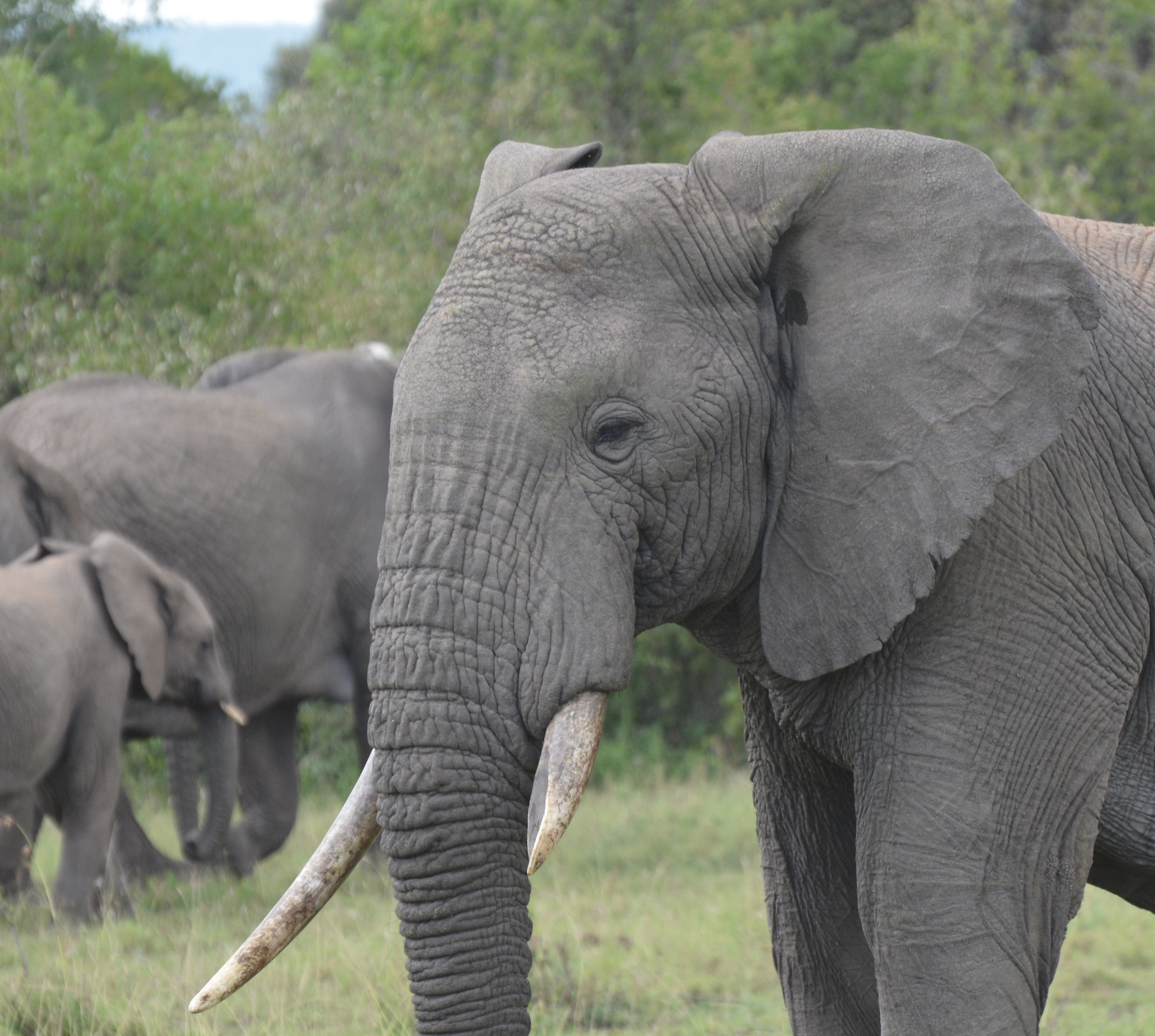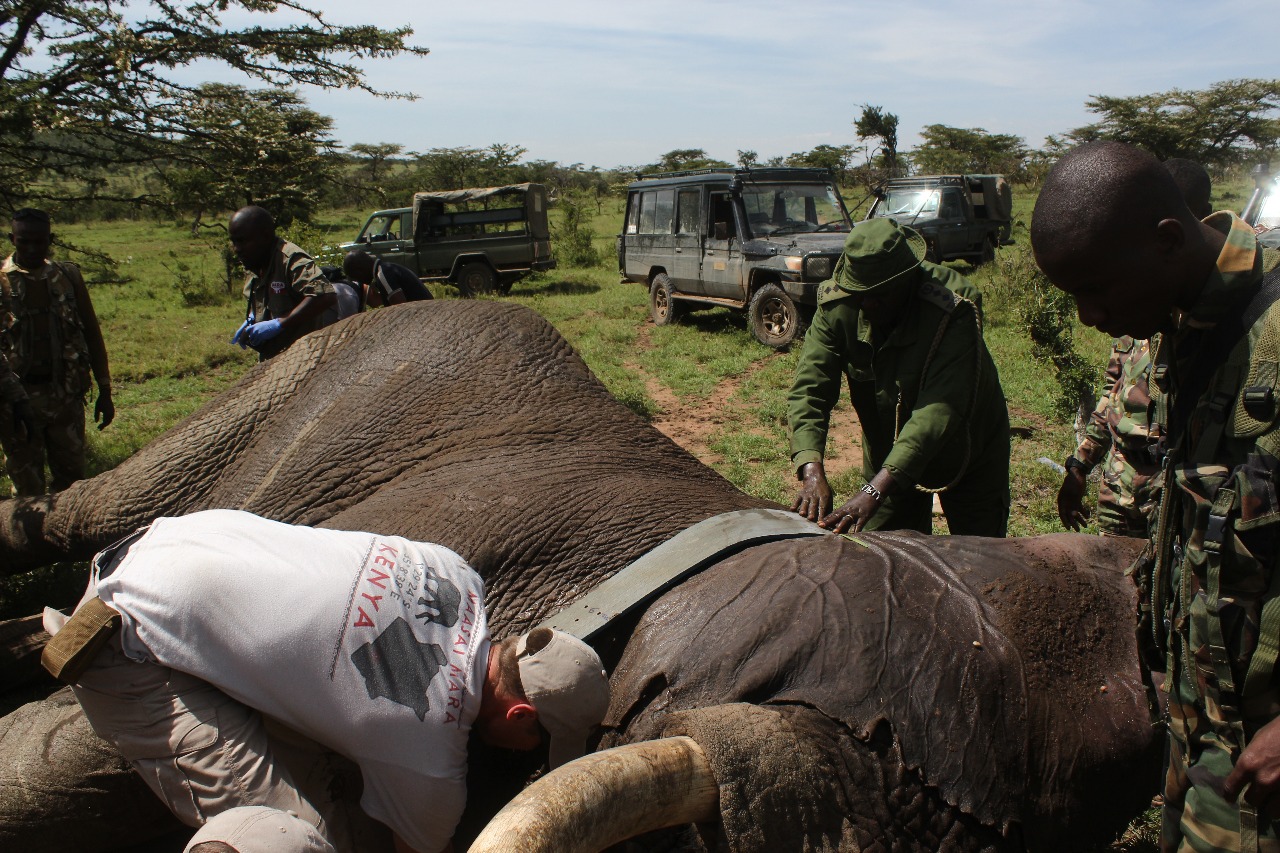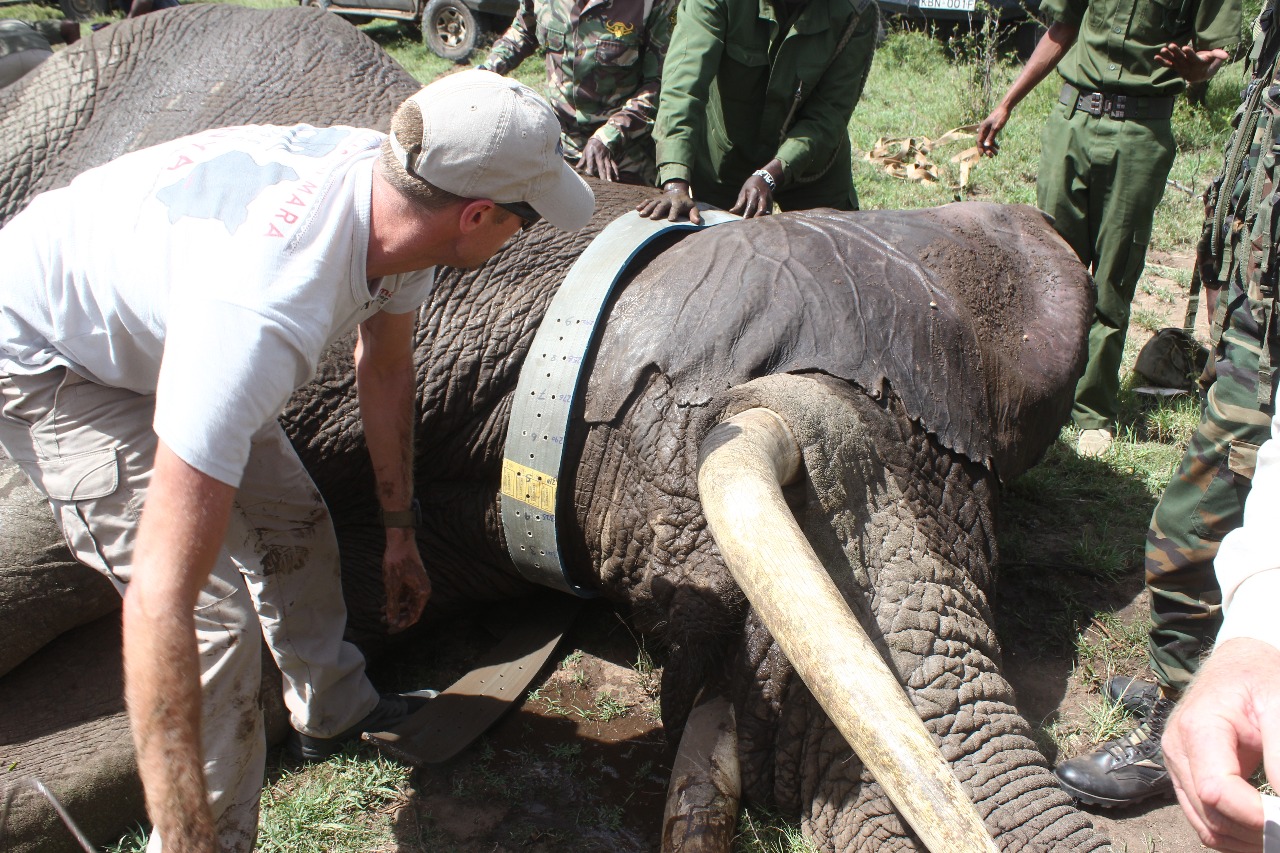On February 18, MEP collared elephant Lempiris’ collar stopped reporting. Mara Elephant Project and Kenya Wildlife Service (KWS) rangers nearby his location were sent with a VHF tracker to try and locate his collar the old-fashioned way. When they found him in good health it was determined that the collar had stopped working due to a hardware failure. Though the collar needed to be exchanged for a newer model, we were relieved to see that Lempiris was in good health.

An ID photo of collared elephant Lempiris.
Lempiris is a large adult bull elephant that was originally collared by MEP in November 2017 in response to an increase in human-elephant conflict along the border of Olarro Conservancy. Since Lempiris was in a high human-elephant conflict area, it was vital that we continued to gather movement data on him so rangers could respond in real-time to help save communities. Additionally, his movement data helped MEP define a northern corridor when he travelled in 2018 all the way to the Mosiro escarpment.

You can see it was a team effort to collar the large bull. Dr. Limo worked with Olarro and MEP rangers along with Marc and Jake.
That’s why on March 10, with the approval of KWS, MEP re-collared Lempiris in Olarro Conservancy. KWS Vet Dr. Limo with the Sheldrick Wildlife Trust Mara Mobile Vet Unit and Olarro Conservancy rangers partnered with MEP during this operation. MEP’s CEO Marc Goss and Director of Research and Conservation Jake Wall joined on the operation. Lempiris was fitted with a brand-new Kevlar collar and an arrow wound was treated on his right rear leg. The operation went very well and Lempiris’ new collar is reporting with zero issues.

Jake Wall assessing the new Kevlar collar on Lempiris.

A close up of the satellite transponder on top of the Kevlar collar.


